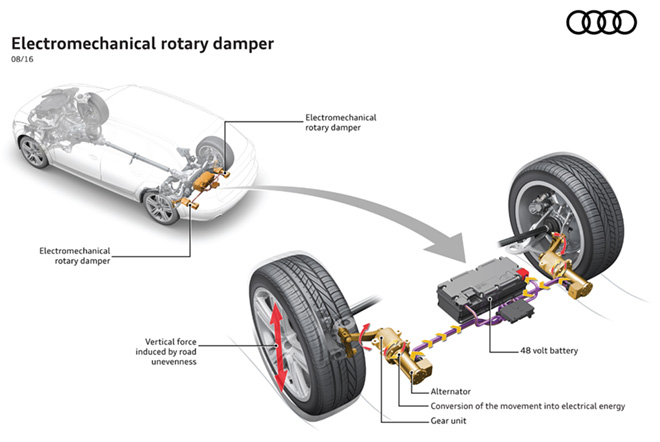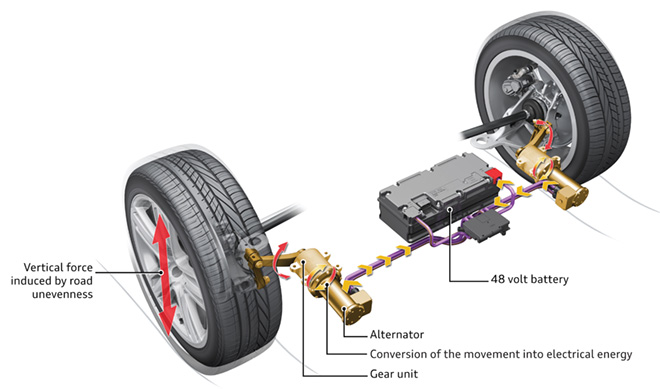Regenerative braking is a familiar way to recover kinetic energy that would otherwise be wasted. A vehicle’s suspension offers a similar opportunity. Audi is working on a system called eROT, which replaces the typical hydraulic dampers with electromechanical rotary dampers to save energy and give a more comfortable ride.
“Every pothole, every bump, every curve induces kinetic energy in the car. Today’s dampers absorb this energy, which is lost in the form of heat,” said Dr. Stefan Knirsch, Board Member for Technical Development. “With the new electromechanical damper system in the 48-volt electrical system, we put this energy to use. It also presents us and our customers with entirely new possibilities for adjusting the suspension.”
The eROT system is an actively controlled suspension, so it can adapt to irregularities in the road surface and the driver’s driving style, and damper characteristics can be defined by software.
Unlike conventional hydraulic dampers, the eROT system allows the rebound and compression strokes to have different characteristics. Audi configures the compression stroke to be comfortably soft without compromising the taut damping of the rebound stroke.
Furthermore, the horizontally arranged electric motors in the rear axle area replace the usual upright telescopic shock absorbers, which allows for additional space in the luggage compartment.
The eROT system can also convert kinetic energy into electricity. A lever arm absorbs the motion of the wheel carrier, and transmits this force to an electric motor. The recuperation output averages between 100 to 150 watts, but can range from 3 watts on a freshly paved freeway to 613 watts on a rough secondary road.
The eROT technology is based on a 48-volt electrical system, which is a central component of Audi’s electrification strategy. In the next version, planned for 2017, the 48-volt system will serve as the primary electrical system, and feed a mild hybrid drive, offering potential fuel savings of up to 0.7 liters per 100 km.
Source: Audi


















































































